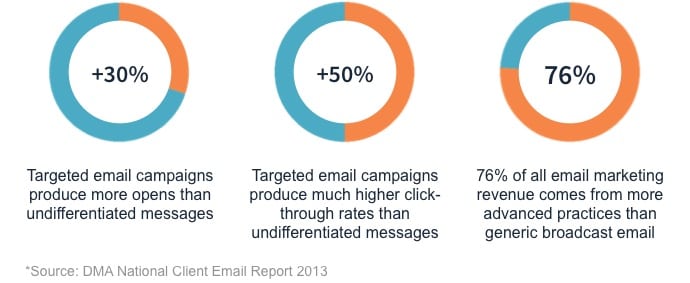Skift Take
There's a shift in the way smart hotels are marketing themselves. Big budget ads and single-track campaigns are being put on the back burner as marketers move towards personalization, continious conversations, and guest-centricity.
Many hoteliers find that their usual approach to advertising is becoming less effective. And if you’re feeling this way, let me tell you: You’re not crazy.
According to a 2012 study by comScore, average ad effectiveness increases with age. Seniors scored the highest, whereas Millennials scored the lowest. These results indicate that traditional ads are less and less effective with each new age demographic that comes along. Millennials are more difficult to persuade via television advertising when compared to older viewers. Given this downward trend, it’s a good bet that traditional marketing will be even less effective with the next generation that comes along after that.
Revinate recently hosted a webinar on guest-centric hotel marketing:
Watch Now!
Taking this trend a step further, traditional television advertising is not the only medium being affected. Even internet ads are suffering, as the use of adblocking extensions becomes more prevalent. 33% of Facebook users have some kind of adblocker, according to a GWI study. So, if you’re using traditional side bar CPC ads on Facebook, it means that as much as 33% of your audience isn’t even seeing your ad.
Additionally, adblocker use is a generational trend. While some Baby Boomers and Gen Xers are using adblockers, the age group with the highest use of adblockers is the Millennials. With each new generation, opposition to traditional advertising is growing.
So what are hoteliers supposed to do, looking into the future? We’ve noticed a few key trends.
Marketing Then: Isolated Channels
Marketing Now: Coordinated Experiences
The first, is that we no longer have isolated channels in marketing. In 2013, the media was fixated on the idea of the “brand story”, where brands deliver a consistent experience across all channels. One of the major trends this year according to Google has been cross-device behavior, where travelers research trips on their phones and tablets but eventually book on their laptops. Even TV is becoming individually addressable: Millennials today spend their entertainment time online and only 44% of their TV watching time actually happens on a television. You’re not just talking to guests in person at the front desk or over the phone. You’re talking to them via email, social media, on review sites like TripAdvisor, and in some cases even via text message. It’s not just about one isolated communication channel, it’s about this web of coordinated experiences.
Marketing Then: One Size Fits All
Marketing Now: Hand-Crafted Approaches
The second trend is that you can no longer take a one size fits all to your marketing approach. Hoteliers can’t rely on just their website, and they can’t send identical emails to every guest and expect those emails to be successful with today’s travelers. In a Yahoo study conducted in May of 2014, consumers preferred personalized ads, finding them more engaging [54 percent], educational [52 percent], time-saving [49 percent] and memorable [45 percent] than general ads.
Likewise, you can’t post the same kinds of messages to Twitter as you do to Facebook or Instagram. Across this new web of coordinated experiences, on email, social media, text message, and others, each channel is very different, just as each guest is unique. A reply to a customer’s question on Twitter is going to be very different than a response to an email or an online review. Or, for example, Google+ users tend to be younger and largely male.
In other words, your messaging should tell a continuous story across all channels, but it needs to be crafted differently for each medium of communication.
Marketing Then: Campaign-Based Marketing
Marketing Now: Continuous Conversations
The third trend is the shift from campaign-based marketing to continuous conversations. Marketing communications are no longer a singular blast. As we previously discussed, traditional megaphone marketing doesn’t work anymore. You can’t shout at your guests. You have to cultivate relationships, by giving guests a reason and an opportunity to respond.
User generated content campaigns are one way to accomplish this. The Four Seasons does a great job leveraging guest photos on Instagram. By identifying influencers and giving them a public nod, you not only make a 1:1 connection with that guest–you also show other prospective guests that you care about the individual guest experience.
Marketing Then: Just Demographics
Marketing Now: True Context
The final trend we’re seeing is an evolution of really basic, simple demographics into a targeted approach that really hones in on who these guests are. We can look at demographic attributes like age, gender, location, job title, and marital/kids status, but we should also be taking it a step further. How many times has this guest stayed with the hotel in the past? What are his or her interests and preferences? What kind of trip is this person on? In other words, what is this specific person looking for right now?
Want to learn more about targeted marketing?
To learn more about the evolution of hotel marketing, watch Revinate’s webinar on guest-centrcity:
Watch Now!
This content is created collaboratively in partnership with our sponsor, Revinate.
The Daily Newsletter
Our daily coverage of the global travel industry. Written by editors and analysts from across Skift’s brands.
Have a confidential tip for Skift? Get in touch
Tags: hotels, personalization, target marketing



